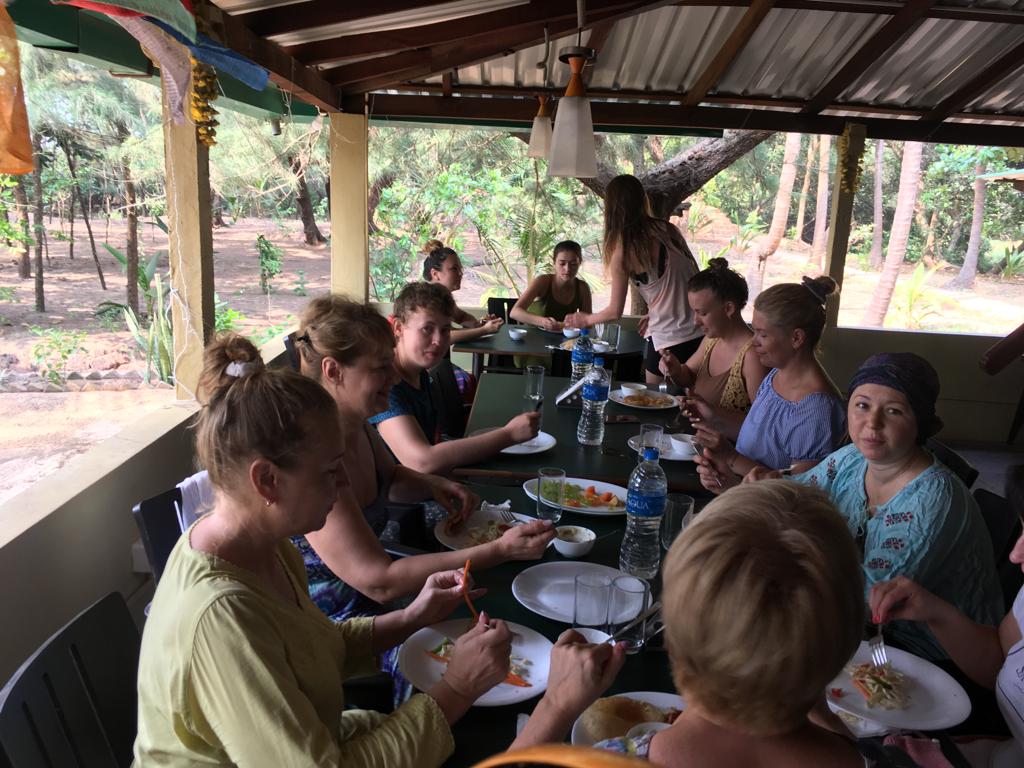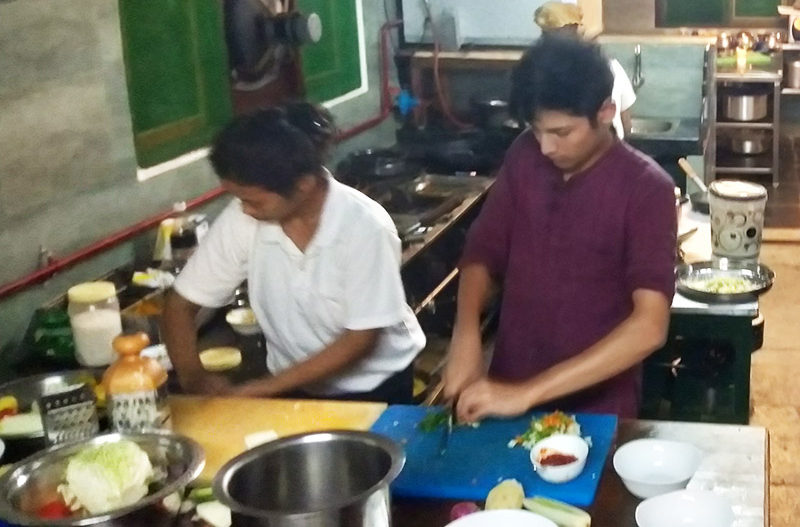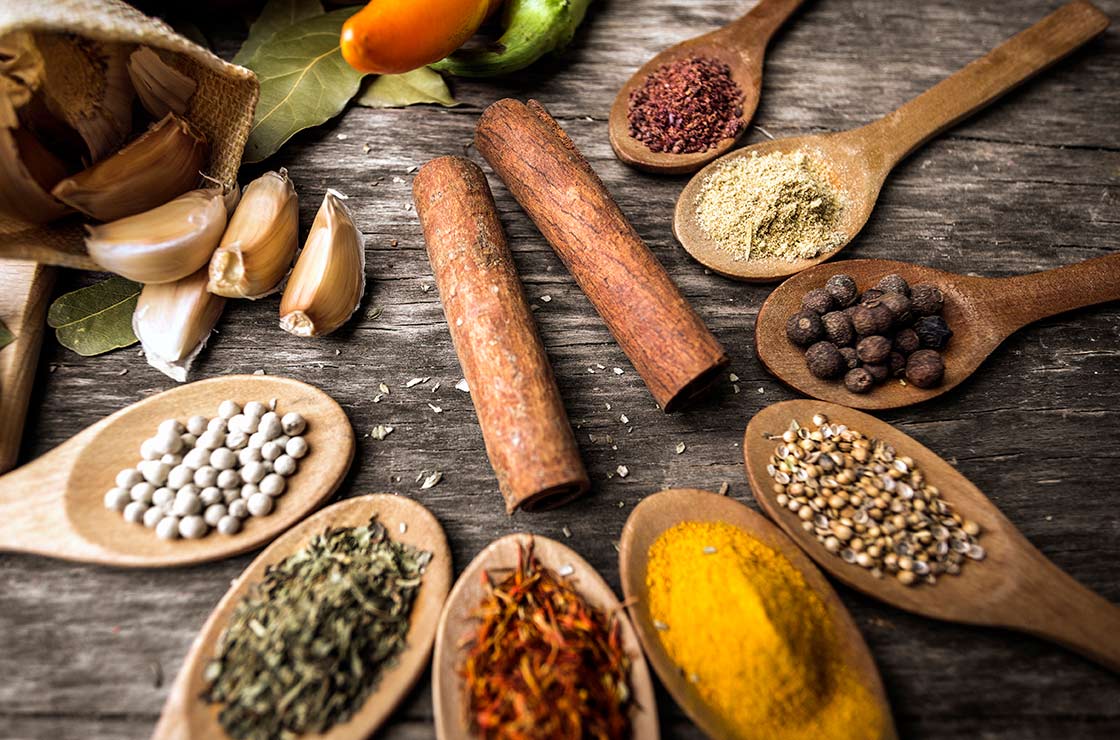DINING
CUISINE
Our endeavour at OmBodhi Retreat is to grow as much as possible in our own vegetable garden. Our effort to grow vegetables which are indigenous to the region. We have a reasonable good coconut and cashewnut plantation. We also have a small organic vegetable garden, which we shall expand in near future. Everything grown here is organic. In addition to this, we put all our efforts to procure organically grown vegetables locally. We are a growing community and we keep inviting people who believe in organic life and help us with their ideas that can be implemented at our retreat.
We keep high standards of our food, raw material and whatever we procure from outside, we make sure it always remains of high quality.
At OmBodhi Retreat you would be delighted to experience the variety of nutritious cuisine we have to offer.The exotic tropical fruits of the region always enthrall our guests.
Our region is known worldwide for its exotic and aromatic spices, not only in modern times but since ancient times. The popularity of the Spice Route, like the Silk Route, had influenced the commerce and cultures of a vast region, stretching from this part of the world to the Far-east on one side and Middle-east to Europe on
the other. Over a long period of time, many battles had been fought, and strategies evolved to control the spice routes.
ENJOY THE BEST FOOD
Restaurant
We also have an option of outdoor dining amidst the tall casuarina trees between the restaurant and the beach.
Our restaurant is mostly for our in-house guests; hence cuisine may have some limitations, though it is spread over four A-4 sized sheets.
We do not sell or serve beer or any other alcoholic beverage in our restaurant.
Brief History of Spice Route
The spice trade refers to the trade between historical civilizations in Asia, Northeast Africa and Europe. Spices such as cinnamon, cassia, cardamom, ginger, pepper, and turmeric were known and used in antiquity for commerce in the Eastern World. These spices found their way into the Middle East before the beginning of the Christian era, where the true sources of these spices were withheld by the traders and associated with fantastic tales.
Early writings and stone age carvings of neolithic age obtained indicates that India’s southwest coastal port Muziris, in Kerala, had established itself as a major spice trade centre from as early
as 3000 BC, which marked the beginning of the spice trade. Kerala, referred to as the land of spices or as the “Spice Garden of India”, was the place traders and explorers wanted to reach, including Christopher Columbus, Vasco da Gama, and others.
The Greco-Roman world followed by trading along the Incense route and the Roman-India routes.[3] During the first millennium, the sea routes to India and Sri Lanka (the Roman – Taprobane) were controlled by the Indians and Ethiopians that became the maritime trading power of the Red Sea. The Kingdom of Axum (c.
5th-century BC–AD 11th century) had pioneered the Red Sea route before the 1st century A.D. By mid-7th century AD after the rise of Islam, Arab traders started dominating the maritime routes.
Arab traders eventually took over conveying goods via the Levant and Venetian merchants to Europe until the rise of the Ottoman Turks cut the route again by 1453. Overland routes helped the spice trade initially, but maritime trade routes led to tremendous growth in commercial activities. During the high and late
medieval periods Muslim traders dominated maritime spice trading routes throughout the Indian Ocean, tapping source regions in the Far East and shipping spices from trading emporiums in India westward to the Persian Gulf and the Red Sea, from which overland routes led to Europe.
The trade was changed by the European Age of Discovery, during which the spice trade, particularly in black pepper, became an influential activity for European traders. The Cape Route from Europe to the Indian Ocean via the Cape of Good Hope was pioneered by the Portuguese explorer navigator Vasco da Gama in
1498, resulting in new maritime routes for trade.
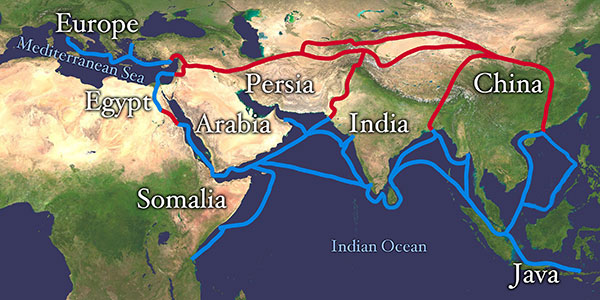
Spice Trade Routes (blue line)
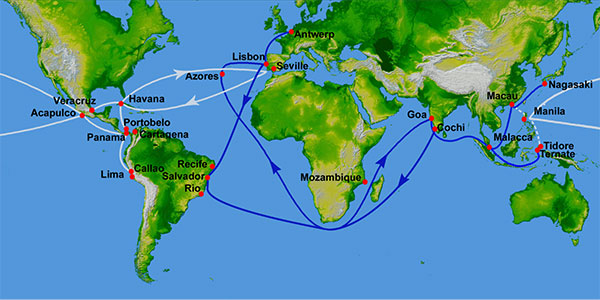
Portuguese India Armadas trade routes (blue line)
There were many different ways that spices were used in antiquity.
This trade – driving the world economy from the end of the Middle Ages well into the modern times – ushered in an age of European domination in the East. Channels, such as the Bay of Bengal, served as bridges for cultural and commercial exchanges between diverse cultures as nations struggled to gain control of the trade along the many spice routes. European dominance was slow to develop. The Portuguese trade routes were mainly restricted and limited by the use of ancient routes, ports, and nations that were difficult to dominate. The Dutch were later able to bypass many of these problems by pioneering a direct ocean route from the Cape of Good Hope to the Sunda Strait in Indonesia. (courtesy Wikipedia)
What Our Clients Say
“Having a good time here. Very serene beach next to the resort. Staff is very courteous. Food is like home food. Simple and tasty. Rooms are clean and cosy.”
Sangeeta Kar. DEC 2019 www.google.com
“Very serene, lush green. great hospitality. Hygienic home like food. Beaches on the back side, as good as private beach.”
Rahul Singh, FEB 2020 www.google.com

